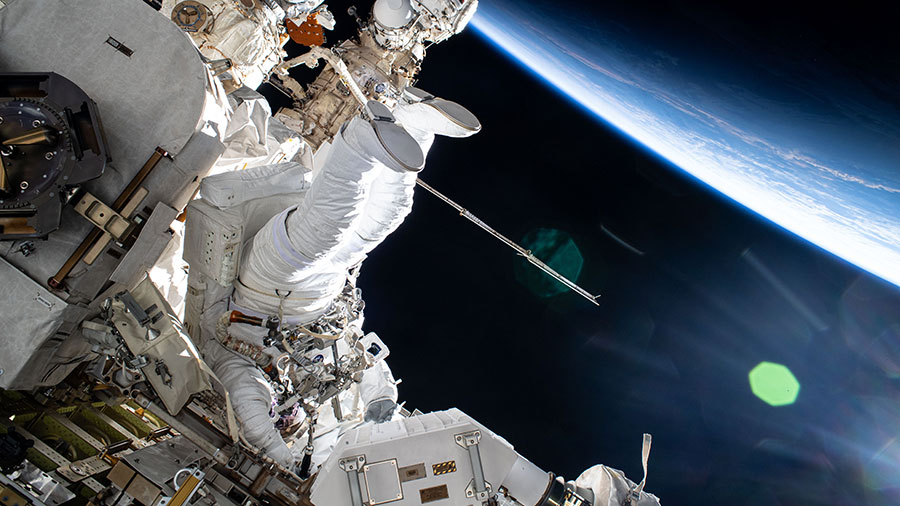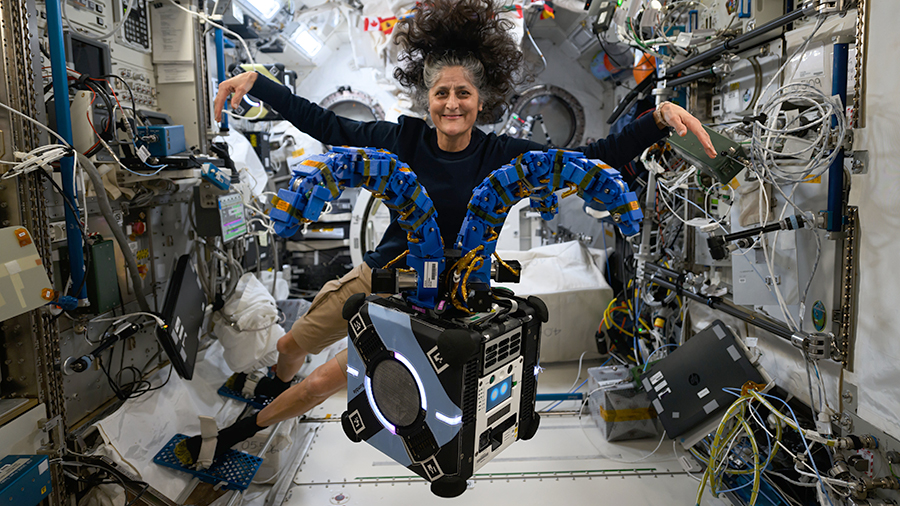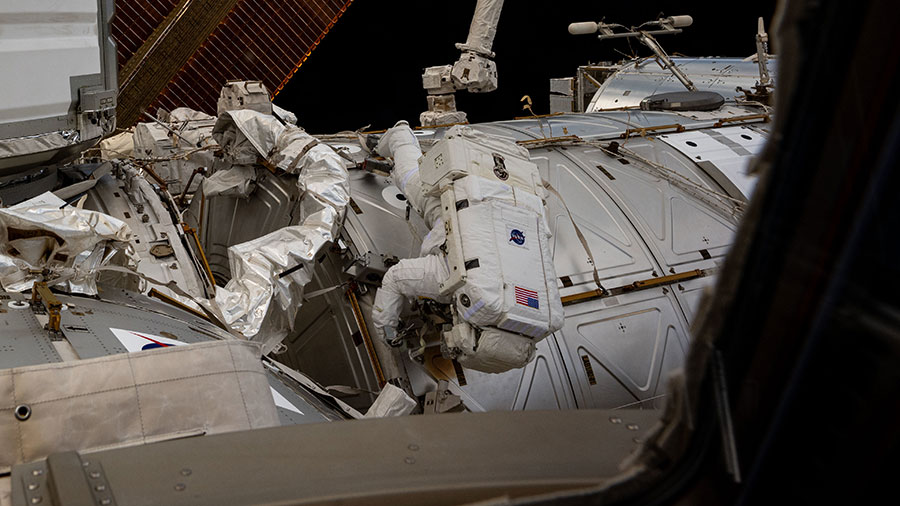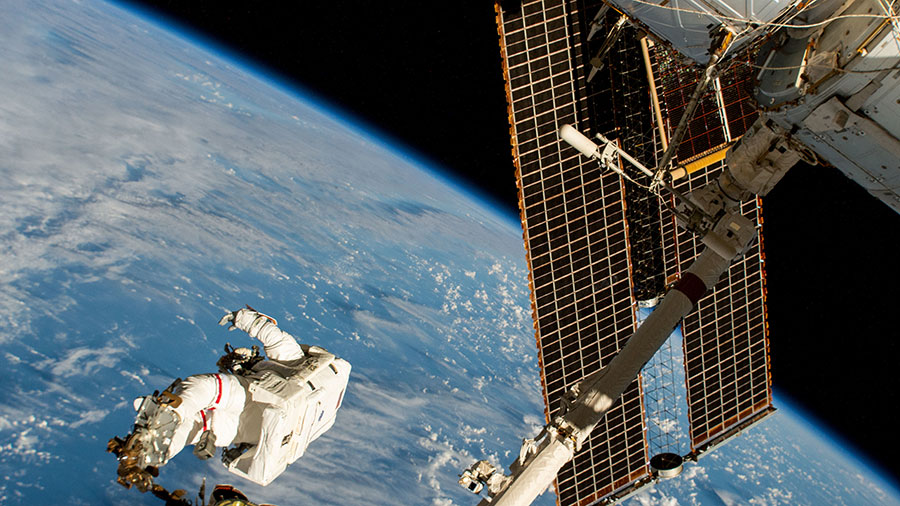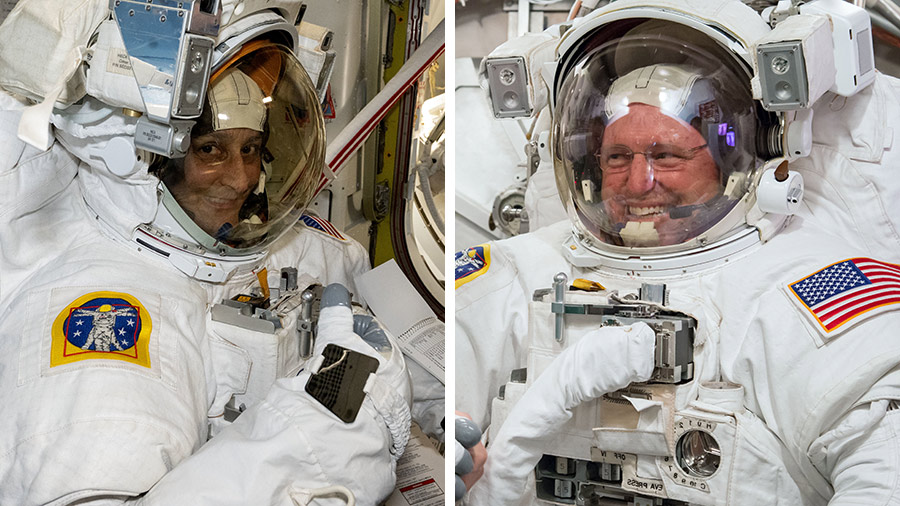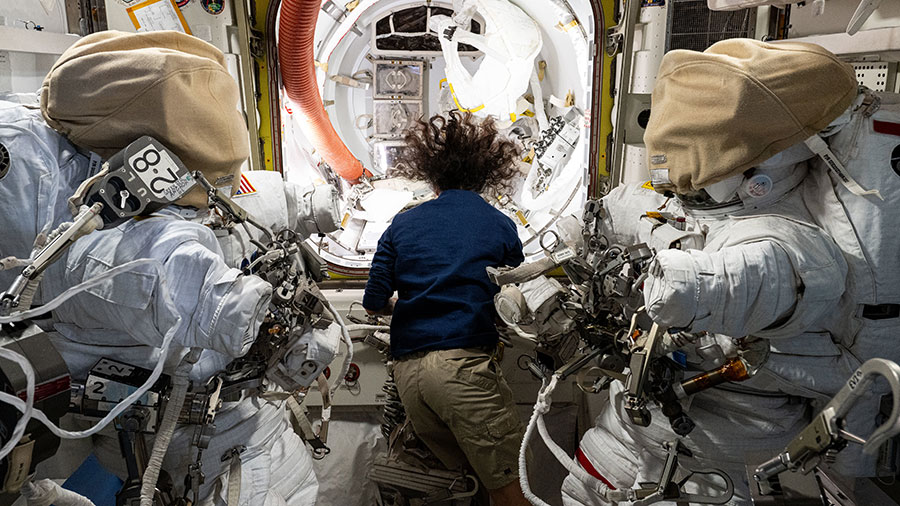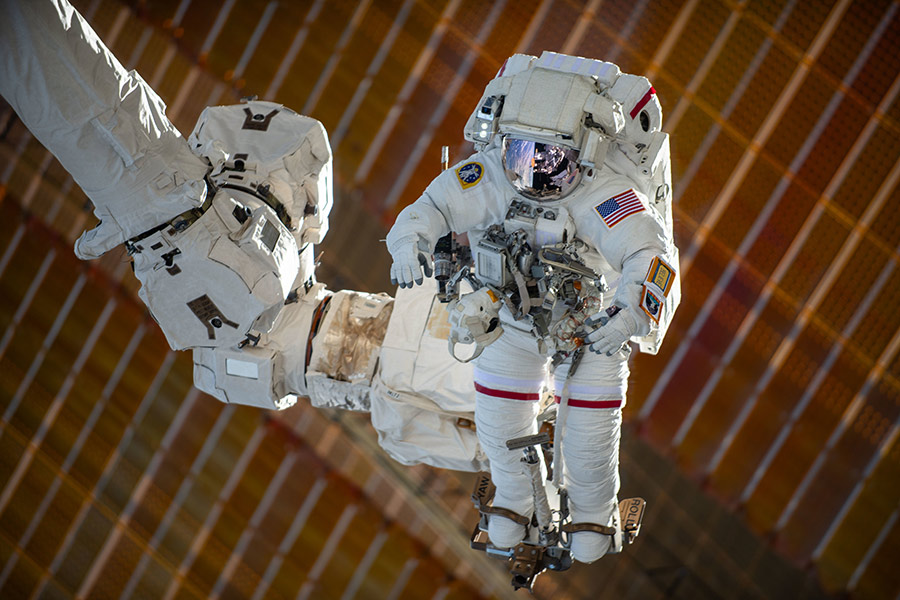
The Expedition 72 crew wrapped up the work week with housekeeping duties and relaxation following several days of spacewalk cleanup activities and advanced research aboard the International Space Station.
Station Commander Suni Williams and Flight Engineer Butch Wilmore, both NASA astronauts, were off duty on Friday after stowing spacewalk tools and deconfiguring spacesuits earlier in the week. The duo used the tools and wore the suits during a five hour and 26-minute spacewalk on Jan. 30 for science and maintenance. Williams and Wilmore also worked throughout the week on robotics research, computer updates, and life support maintenance.
NASA Flight Engineers Nick Hague and Don Pettit took turns at the end of the week measuring the airflow in their crew quarters ensuring a safe breathing environment inside the orbital lab. Hague first checked his overhead crew quarters then Pettit checked his starboard crew quarters, both in the Harmony module, measuring the airflows at different locations and at different speeds. Hague earlier collected biological samples for processing while Pettit conducted a photographic inspection of stowage areas inside the Columbus laboratory module.
Roscosmos Flight Engineer Aleksandr Gorbunov spent his day on variety of science activities. He first prepared drives to capture research data collected from a plasma crystal study, swapped a lens on a student-controlled Earth observation camera, then checked video recording gear. Flight Engineers Alexey Ovchinin and Ivan Vagner spent their day on life support maintenance tasks throughout the orbital outpost’s Roscosmos segment.
Learn more about station activities by following the space station blog, @space_station and @ISS_Research on X, as well as the ISS Facebook and ISS Instagram accounts.
Get the latest from NASA delivered every week. Subscribe here: www.nasa.gov/subscribe


